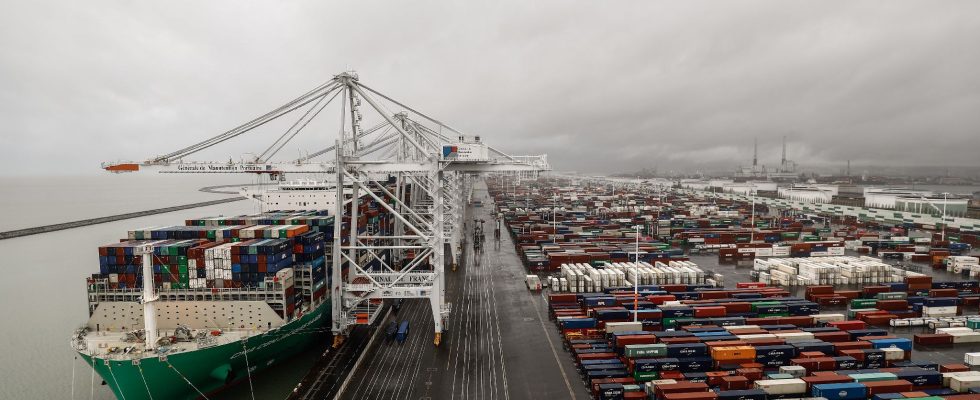Good news for the French economy. The trade deficit fell to 8.4 billion euros in March, or “its least degraded level for a year and a half”, customs said on Tuesday, May 9. This figure corresponds to the difference between exports and imports. For years, France has been in deficit: it imports more than it exports. But this gap narrowed significantly from January 2023.
The trade deficit was thus around 12.3 billion euros in January. The figures for February have been revised downwards from previous estimates, to reach 9.9 billion euros instead of 11 billion euros, the customs said. The March trade balance therefore “continued to improve markedly, by 1.5 billion euros”, note the customs.
In detail: imports reached 59.3 billion euros, and exports 50.9 billion euros. The reduction in the deficit is mainly explained by the reduction in imports, in particular in the energy sector. Despite this drop, “the level of energy supplies remains high compared to those observed between 2000 and 2021”, qualify the customs. Imports of manufactured products also fell over this quarter, to a lesser extent. For its part, the Banque de France reported that in March the current account deficit had become “a surplus of 1.4 billion euros, an improvement of almost 3 billion compared to February”.
A historic deficit in 2022
This is a real upturn for French commerce. In 2022, it had recorded a historic trade deficit of 163.6 billion euros over the year. This record was due to soaring energy prices, a sector for which France is very dependent on other countries. The “France 2030” relocation plan aims to rectify the situation. It should also make it possible to better support the ecological transition and invest in new technologies.
France has been in a trade deficit since the 2000s. It is mainly weighed down by its energy imports, while it posts a surplus in the aeronautics, perfumes and cosmetics or agri-food sectors, including wines and spirits.
